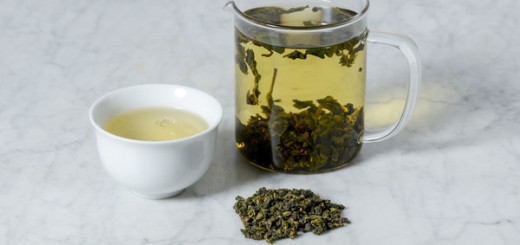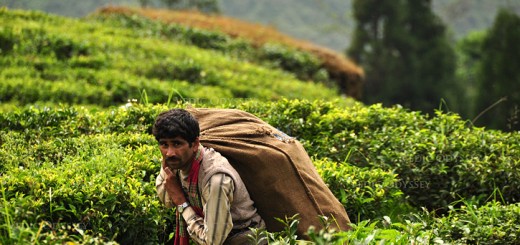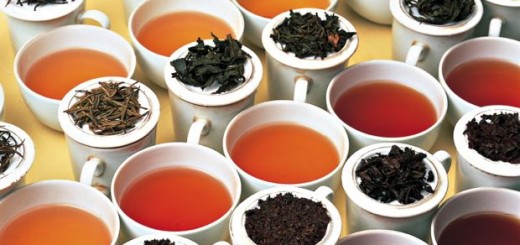Natural History of Tea

Field worker on a Darjeeling tea plantation by http://vedicodyssey.com/spiritualadventures/2010/10/30/tea-anyone-darjeeling-tea/
Tea is used medicinally, ritualistically, and eventually became a drink of the mass populous. Now, tea is the second most popular drink in the world behind water. Tea is responsible, historically, for trade routes, economic rises and collapses, paradigm shifts, etc. Originating in China and Southeast Asia, and spreading widely across the globe, tea has been subject to much genetic interference. Tea plants, or, camellia sinensis, are an evergreen shrub that can grow up to 17m tall, but typically plants in cultivation are trimmed short, mostly for ease during harvest. Tea plants can take between 2-3 years before being fully mature. The leaves are broad and deep green with a waxy sheen, and the flowers are white with a yellow center. Tea can be propagated via cuttings or cross-pollination, though it is unclear whether or not the impact of humans on the species has left any true c. sinensis in the wild. Harvest is done, and has been done for centuries, by hand at carefully chosen times. The tea plant requires significant rainfall on an annual basis, but this must be combined with drainage and precipitation distribution, with the most rainfall occurring during winter and spring making these the most productive seasons. Temperatures ideally are mild to warm and humid. Tea plants flourish in organically rich, slightly acidic soil, with deep hardpan for ample holding/drainage. Most of teas grow best at higher elevations, which allows the plant to grow slower allowing it to acquire more flavor.
Tea plants will vary by the region they are grown in. The two main varieties are Camellia Sinensis, which are Chinese teas, and Camellia Assamica from India. The Chinese version tends to have smaller leaves and grows shorter and are usually used to make green teas. Tea grown in India tends to be broken into three groups: Assam, Darjeeling, and Nilgiri. Assam teas come from northeastern India and usually have a very rich flavor. Darjeeling teas are thought of to be some of the best and most expensive teas in the world. Tea grown in Darjeeling is grown at a very high elevation, giving the teas a very unique, delicate and complex flavor giving it the nickname the “champagne” of teas. Nilgiri teas come from the southern part of the country and provide a subtle, gentle flavor.
In China it is believed that tea can cure over 200 types of illnesses, and has been used medicinally for almost 5,000 years. It has been used to help solve digestive problems, reduce sweating, treat mania, paralysis, nervousness, and sleeplessness. It is also used as a stimulant due to its caffeine content.
There are many different ways to process tea, such as black, white, yellow, green, and oolong. Black teas are teas that have been oxidized the longest, classified by a 80%+ oxydation. Black tea keeps its flavor for long periods of time and can be stored for several years while still keeping it full flavor, and is also known to have higher levels of antioxidant properties. White tea has a much lower oxidation level and is mainly produced in China. White tea also has high levels of antioxidants and is noted to help lower blood pressure, cholesterol, increased function of blood vessels, and cardiovascular disease. Oolong tea can be made several different ways. It is usually either wrapped into small balls or rolled and curled into longer leaves. Oolong has a medium oxidation level, and provides several health benefits including helping to treat heart disease and high cholesterol levels. It has also been told to help provide good dental health. Green tea is made through a very brief oxidation process, and is one of the least processed forms of tea. Green tea has also has many health benefits and has been thought to help treat heart disease, lower chance of strokes, and even decrease tumor growth. Yellow tea is very similar to green tea, however it is steamed after the oxidation process.
Written by: Gabe Needham





